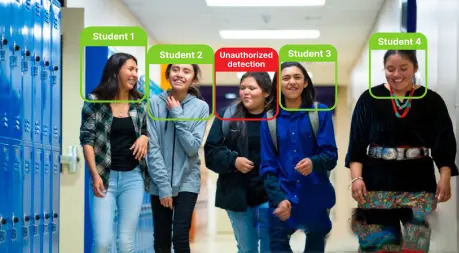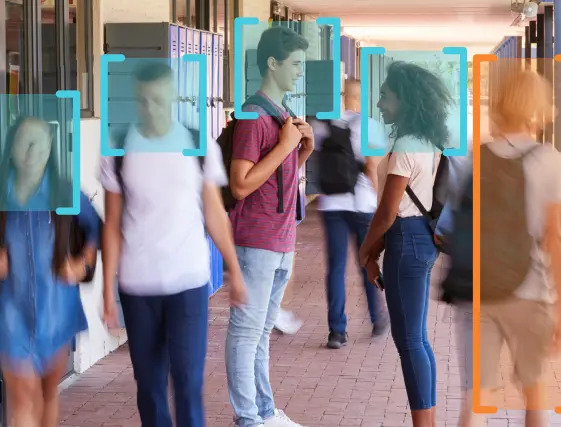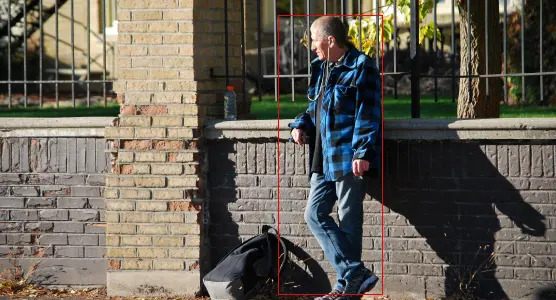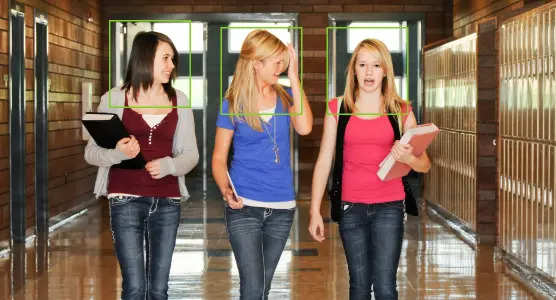AI video analytics can significantly enhance school security by providing real-time monitoring, analysis, and response capabilities.
Here are several ways AI video analytics can improve school security:
Facial Recognition:

AI-powered facial recognition technology can help identify individuals on school premises, including students, staff, and visitors. It can be used to detect and flag persons of interest, such as expelled students or individuals with a history of violence.
Anomaly Detection:
AI algorithms can learn typical patterns of activity within school environments and identify anomalies that may indicate potential security breaches, such as someone loitering in an area for an unusual amount of time or unusual crowd behavior.
Monitoring Restricted Areas:
AI video analytics software can monitor restricted areas such as entry points, parking lots, and corridors to ensure only authorized individuals have access. Any unauthorized entry or suspicious activity can trigger immediate alerts.
Crowd Monitoring:

AI-powered video analytics can monitor crowd movements and detect overcrowding in certain areas. This can help prevent accidents and ensure the safety of students and staff during emergencies.
Emergency Response Optimization:
In the event of an emergency such as a fire, intrusion, or active shooter situation, AI video analytics can provide real-time information to first responders, including live video feeds, location data, and situational analysis, enabling a more informed and coordinated response.
Post-Incident Analysis:
AI can analyze video footage after security incidents to help identify the sequence of events, individuals involved, and potential areas for improvement in security protocols.
Threat Detection:

AI algorithms can analyze video feeds to detect potential threats such as unauthorized individuals entering restricted areas, carrying weapons, or exhibiting suspicious behavior. This can trigger immediate alerts to security personnel, allowing for prompt intervention.
Integration with Access Control Systems:
AI video analytics can be integrated with access control systems to enforce security policies, such as automatically denying entry to unauthorized individuals or sending alerts when someone attempts to bypass security measures.
Behavioral Analysis:
AI can analyze behavior patterns to detect signs of aggression, violence, or distress among individuals. This could include detecting fights, bullying incidents, or individuals in distress who may require assistance.
Privacy Protection:
It’s crucial to implement AI video analytics systems with privacy protection mechanisms in place, such as anonymization of personal data and compliance with regulations like GDPR or CCPA.
Continuous Improvement:
AI algorithms can continuously learn and adapt to evolving security threats, improving their accuracy and effectiveness over time.
By leveraging AI video analytics, schools can enhance their security measures, create safer environments for students and staff, and respond more effectively to security incidents as they arise. However, it’s essential to balance the benefits of these technologies with considerations for privacy, ethics, and responsible use.


